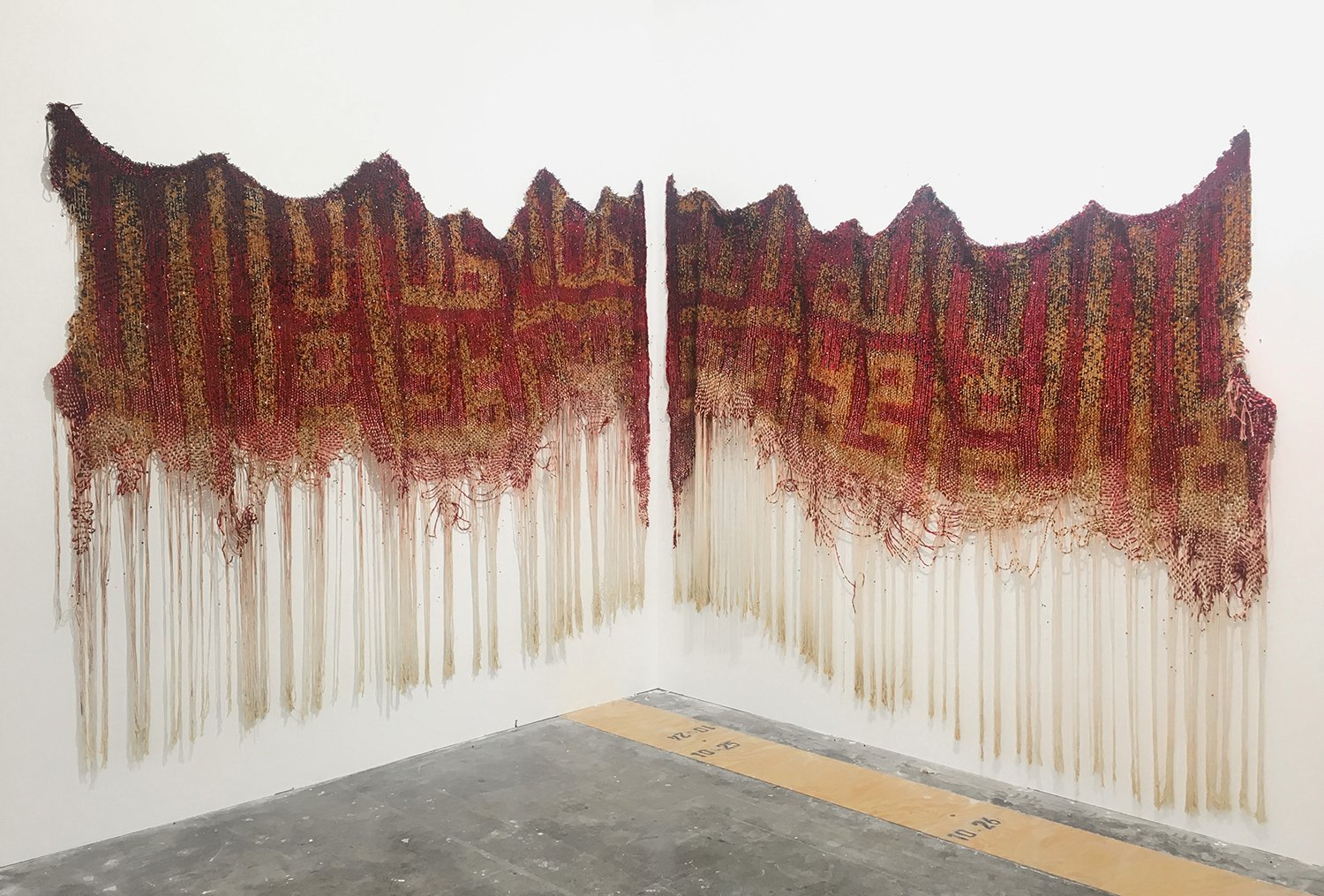
With all eyes on the city’s burgeoning contemporary art scene, this year’s edition of the Cape Town Art Fair was worth the trek.
The South African fair, now in its fifth season, runs from February 17—19. A VIP opening and vernissage on Thursday, February 16, drew eager crowds to the Cape Town Convention Centre.
Although the crowd was international, dealers from Johannesburg and Cape Town took pride in what they called a “hometown” event, one that allows them to show a wide range of their programs, rather than a solo show or thematic exhibit tailored to a European or American audience.
Monna Mokoena and Odysseus Shirindza of Gallery MOMO (Johannesburg and Cape Town) praised the fair’s layout in the spacious convention center, which has been easy to navigate. “It’s a great platform for us to introduce new and more established artists alike,” said Mokoena.
Ayana V. Jackson, Anarcha (2017). Courtesy of Gallery MOMO.
In the main section of the fair, the gallery showed work by Todd Gray, Pedro Pires, Ayana V. Jackson, Roger Ballen and Khayalethu Witbooi, while showing work by Maurice Mbikayi at the Tomorrows/Today section, and a compelling installation by Mary Sibande in Unframed, the fair’s newest section.
Exhibitors noted a welcome increase in international collector attendance, a trend that has been on the rise during the fair’s short lifespan.
“It’s incredible,” said Liza Essers, owner of Goodman Gallery, which has branches in both Johannesburg and Cape Town. “There is a big buzz, everyone is really excited and we’ve done really well,” she told artnet News, just a few hours into the opening, noting that most works were already sold.
William Kentridge, Untitled (Patrice Lumumba II) (2016). Courtesy the artist and Goodman Gallery.
The gallery’s main booth—one of three—showcased the gallery’s dynamic range, including work by William Kentridge, black-and-white photography by David Goldblatt, a wall installation by Kendall Geers, and work by Kudzanai Chiurai and Alfredo Jaar, among others.
Kendall Geers, Be/LIE/VE. (2006) Courtesy the artist and Goodman Gallery, Johannesburg and Cape Town.
Essers was encouraged by the participation of Italian dealer Massimo Minini, saying, “to have a legendary dealer like him here is, i think, a defining and turning point in terms of the development and evolution of this art fair.”
Joost Bosland, director and partner of Stevenson Gallery (Cape Town and Johannesburg), agreed. “It’s so incredible to be a host for a change. We’re in our own city and people from Johannesburg and internationally as well have come here to see what we are doing.”
Cinga Samson, Hliso Street V (2017). Courtesy the artist and Blank Projects, Cape Town and Johannesburg.
“We want Cape Town to become a destination,”said Jonathan Garnham, owner and director of Blank Projects gallery based in Cape Town.
artnet News also chatted with Tumelo Mosaka, the fair’s dynamic new director, who introduced the Unframed section this year.
Mosaka described the atmosphere at the vernissage as “a good, healthy vibe,” and said the fair aims to keep building on its strength.
Among the standouts of international galleries was the booth of Galeria Continua, which lists spaces in San Gimignano, Beijing, Les Moulins, and Havana. On view were works by artists with popular appeal, such as Kader Attia, Antony Gormley, Shilpa Gupta, and Pascale Marthine Tayou.
“For us, African is our strength,” Mosaka said, “but we obviously want to keep adding more international galleries.”
Misheck Masamvu, Glamour ‘n Protest (2016). Courtesy the artist and Goodman Gallery.
Another Goodman artist, Zimbabwe-based Misheck Masamvu, was featured prominently on the outside of the booth. Masamvu and his wife, Ginny, also took a booth in the Culltural Platforms section to share in-progress works from the collective they founded in Harare, called “Village Unhu.”
As Masamvu explained to artnet News, “to some extent, I look at the collective as part of a family. We took the set-up of a village in the sense that. . . it is something that might disappear. The main thing that we wanted to address that was missing, is the formal studio space.”
Now, after some trial and error, Masamvu says the Village Unhu space is also functioning as a gallery, another aspect of the equation he eventually determined was crucial.